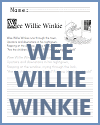The "qu" spelling in the English language has a rich history that dates back to its Latin roots. The digraph "qu" was used in Latin to represent the /kw/ sound, and as Latin evolved into the various Romance languages, this spelling convention was retained. When the Norman Conquest of England occurred in 1066, the French language, which had also adopted the Latin "qu" spelling, significantly influenced Old English. Consequently, many Latin and French words were introduced into English, carrying over the "qu" spelling.
In Middle English, the "qu" digraph became firmly established in words of Latin and French origin, such as queen (from the Old English cwen), quick (from the Old English cwic), and question (from Latin quaestio). This spelling convention helped distinguish the /kw/ sound from the /k/ sound in words like cat and king, providing clarity and consistency in pronunciation and writing.
The use of "qu" also extended to new words and borrowings from other languages, maintaining its presence in Modern English. Today, "qu" is a standard spelling pattern in English, seen in numerous words, including quality, quaint, and quiz. Its historical journey from Latin through French to English showcases the dynamic and evolving nature of the language, reflecting centuries of linguistic development and cultural exchange.
|














